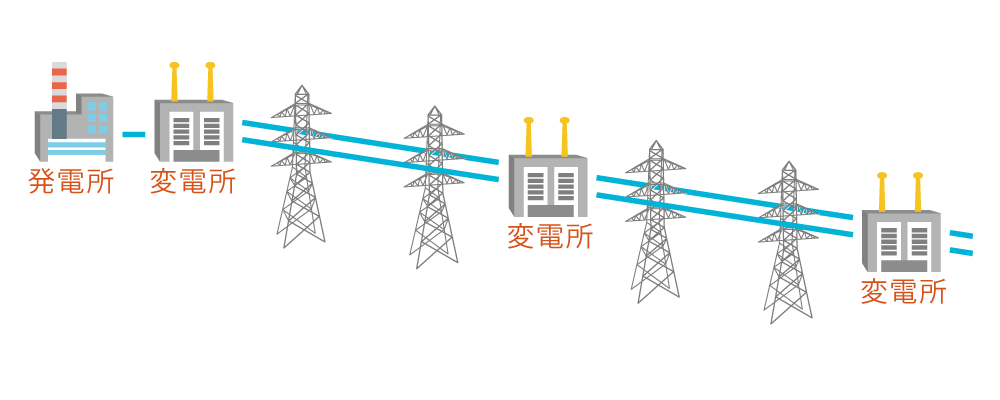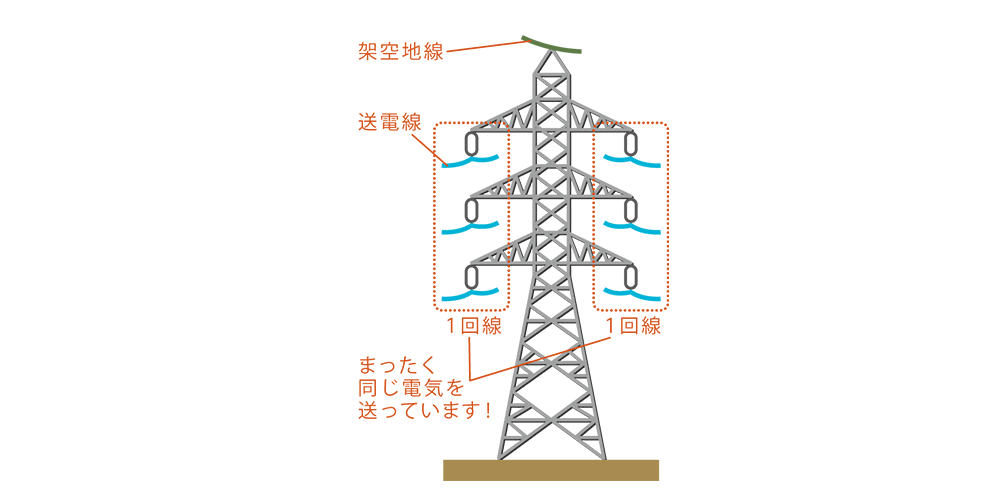



-
- Free Word Search




Generally, electricity is generated at power plants operated by electric power companies. The electricity that leaves the power plant travels along transmission lines on steel towers, and the voltage is adjusted at substations along the way before being sent to electricity users such as factories and homes.
The power lines that transmit electricity are installed above ground level. The standard and most common form is a two-circuit vertically arranged power line, with three lines on each side of the tower, for a total of six power lines.

In a two-circuit vertically arranged transmission line, power is sent symmetrically on the left and right as shown in the figure, but the left and right are not different electricity. The exact same electricity is sent over the two circuits.
This system allows electricity to continue to be sent from the remaining transmission system to the next tower even if an accident occurs on one side that makes it impossible to transmit electricity due to a natural disaster, bird or animal damage, or human error. In other words, by transmitting electricity in a redundant manner, reliability is increased to prevent long-term, large-scale blackouts due to accidents, etc.
If you look closely, you will also notice that there is an electric wire at the highest point of the tower. This wire is called an overhead ground wire, and it is not intended to transmit electricity, but serves as a lightning arrester, directing lightning strikes to this wire. This prevents lightning from striking the power transmission line as much as possible.

Power companies are trying to improve the reliability of power transmission through these measures, but power outages still occur. In the next issue, we will introduce some surprising types of power outages!
Written by: Toshiyuki Nishizawa, Senior Sales Engineer, Sales Division, SANYO DENKI CO., LTD.
release date: